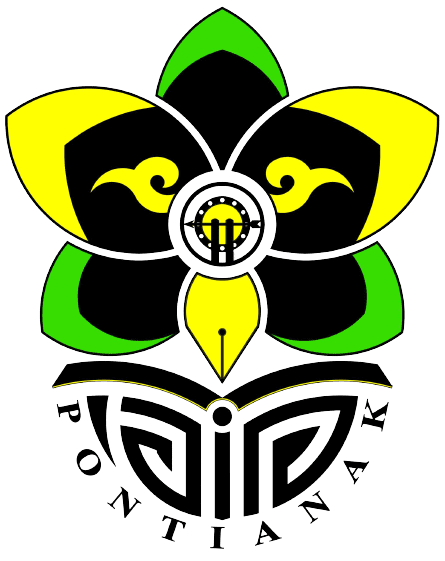EMPAT PILAR PENDIDIKAN UNESCO DI PAUD TERPADU MUTIARA YOGYAKARTA
DOI:
https://doi.org/10.24260/albanna.v3i1.1849Keywords:
Empat Pilar Pendidikan, UNESCO, Pendidikan Anak Usia DiniAbstract
This study aims to determine the application of the four pillars of UNESCO education in PAUD Terpadu Mutiara Yogyakarta. The method used in this research is descriptive which gives a complete picture. This study uses interview and documentation techniques to collect data, then the data is analyzed and described with an inductive-deductive thinking pattern. This study obtained the results of the implementation of the four pillars of UNESCO education at PAUD Terpadu Mutiara Yogyakarta, as follows: (1) Learning to know (learning to know) by applying an Islamic approach; (2) Learning to be (learning to be something) by applying child-centered learning and learning by doing (learning by doing) carried out by students; (3) Learning to be (learning to be something) by habituation (habbit forming) in the school environment; (4) Learning to live together (learning to live together) through the example (uswatun hasanah) given by the teacher. The four pillars of UNESCO are interrelated with each other, so that they are carried out in a sustainable manner. In the end, the achievement of the implementation of the four pillars of UNESCO education in PAUD Terpadu Mutiara Yogyakarta can be realized. This research aims to determine the implementation of the four pillars of UNESCO education in PAUD Terpadu Mutiara Yogyakarta. The method used in this research is descriptive which gives a complete picture. This study uses interview and documentation techniques to collect data, then the data is analyzed and described with an inductive-deductive thinking pattern. This study obtained the results of the implementation of the four pillars of UNESCO education at PAUD Terpadu Mutiara Yogyakarta, as follows: (1) Learning to know (learning to know) by applying an Islamic approach; (2) Learning to be (learning to be something) by applying child-centered learning and learning by doing (learning by doing) carried out by students; (3) Learning to be (learning to be something) by habituation (habbit forming) in the school environment; (4) Learning to live together (learning to live together) through the example (uswatun hasanah) given by the teacher. The four pillars of UNESCO are interrelated with each other, so that they are carried out in a sustainable manner. In the end, the achievement of the implementation of the four pillars of UNESCO's education at PAUD Terpadu Mutiara Yogyakarta was realized to the maximum.
Downloads
References
Arikunto, S. (2010). Prosedur Penelitian, Suatu Pendekatan Praktik. Rineka Cipta.
Aunurrahman. (2014). Belajar dan Pembelajran. Alfabeta.
Bahri, Z. (1993). Kamus Umum. Yogyakarta: Angkasa.
Efendi, D. (2015). Dasar-Dasar Ilmu Pendidikan. Padang: Universitas Negeri Padang.
Hamdani. (2011). Strategi Belajar Mengajar. Bandung: CV Pustaka Setia.
Hamzah, N. (2017). Wajah Buram Madrasah Indonesia (Studi Pada Beberapa Madrasah Tidak Terakreditasi di Pedalaman Kubu Raya). Jurnal At-Turats, 11(2).
Hamzah, N., & Suratman, B. (2023). Pop Culture and New Media Impact of Internet Use in Parenting on Early Childhood Development. Kiddo: Jurnal Pendidikan Islam Anak Usia Dini, 4(1).
Hutagalung, A. I. Y., & Suratman, B. (2019). Peran Pendiri Sekolah dalam Mengembangkan Kinerja Guru di KB Fun Islamic School Suronegaran Purworejo. Southeast Asian Journal of Islamic Education, 2(1), 33–50. https://doi.org/10.21093/sajie.v2i1.1764
Juliani. W.I, & Widodo. H. (2019). Intregasi Empat Pilar Pendidikan (UNESCO) Melalui Pendidikan Holistik Berbasis Karakter di SMP MUHAMMADIYAH 1 PRAMBANAN. JURNAL PENDIDIKAN ISLAM. Volume 10, Nomor 2, November 2019. P ISSN; 2087-7064. E ISSN: 2549-7146. Available At: http://journal.uhamka.ac.id/index.php/jpi.
Kunandar. (2007). Guru Profesional. Jakarta: PT Rajagrafindo Persada.
Laksana, S. D. “Integrasi Empat Pilar Pendidikan (UNESCO) dan Tiga Pilar Pendidikan Islam.” Al-Idarah 6, no. 1 (2016): 43–61
Makmun, H. (2017)Life Skill Personal Self Awareness. Yogyakarta: Deepublish Publisher.
Ma’arif, S. (2005). Pendidikan Pluralisme di Indonesia. Jogjakarta: Logung Pustaka.
Mastuhu. (2003). Menata Ulang Pemikiran Sistem Pendidikan Nasional Abad 21. Yogyakarta: Safiria Insania Press.
Priscilla, C., & Yudhyarta, D. Y. (2021). Implementasi Pilar-Pilar Pendidikan UNESCO. Asatiza: Jurnal Pendidikan, 2(1), 64–76. https://doi.org/10.46963/asatiza.v2i1.258
Safrudin., Mulyati. S., & Lubis. R. Pengembangan Kepribadian Dan Keprofesionalan Bidan. Malang: Wineka Media, 2018.
Sindhunata. (2001). Menggagas Paradigma Baru Pendidikan, Demokartisasi, Otonomi. Jakarta: Civil Society.
Shofan, M. (2007). The Realistic Education. Jogjakarta: Ircisod.
Sudarwan, D. (2010). Pengantar Kependidikan. Alfabeta.
Suprijanto. (2008). Pendidikan Orang Dewasa: Dari Teori Hingga Aplikasi. Jakarta: Bumi Aksara.
Sukmadinata, N. S. (2012). Metode Penelitian Pendidikan. Bandung: PT. Remaja Rosdakarya. PT. Remaja Rosdakarya.
Sukiyasa, & Kadek. Pengaruh Media Animasi Terhadap Hasil Belajar Dan Motivasi Belajar Siswa Materi Sistem Kelistrikan Otomotif. Jurnal Pendidikan Vokasi. Jurnal 3 no. 1 (2013): 129.
Suratman, B., & Rahnang, R. (2021). Kindergarten Early Childhood Learning Practices in Education Institutions Kindergarten. Albanna: Jurnal Pendidikan Islam Anak Usia Dini, 1(1), 30–40.
Suwarno, W. (2006). Dasar- Dasar Ilmu Pendidikan. Salatiga: Ar- Ruzz.
Syafril, & Zein, Z. (2019). Dasar-dasar Ilmu Pendidikan. Kencana.
Taniredja, T. (2016). Guru yang Profesional. Bandung: Alfabeta.
Wibowo, N. (2016). Upaya Peningkatan Keaktifan Siswa Melalui Pembelajaran Berdasarkan Gaya Belajar Di Smk Negeri 1 Saptosari. Elinvo (Electronics, Informatics, and Vocational Education), 1(2), 128–139. https://doi.org/10.21831/elinvo.v1i2.10621









